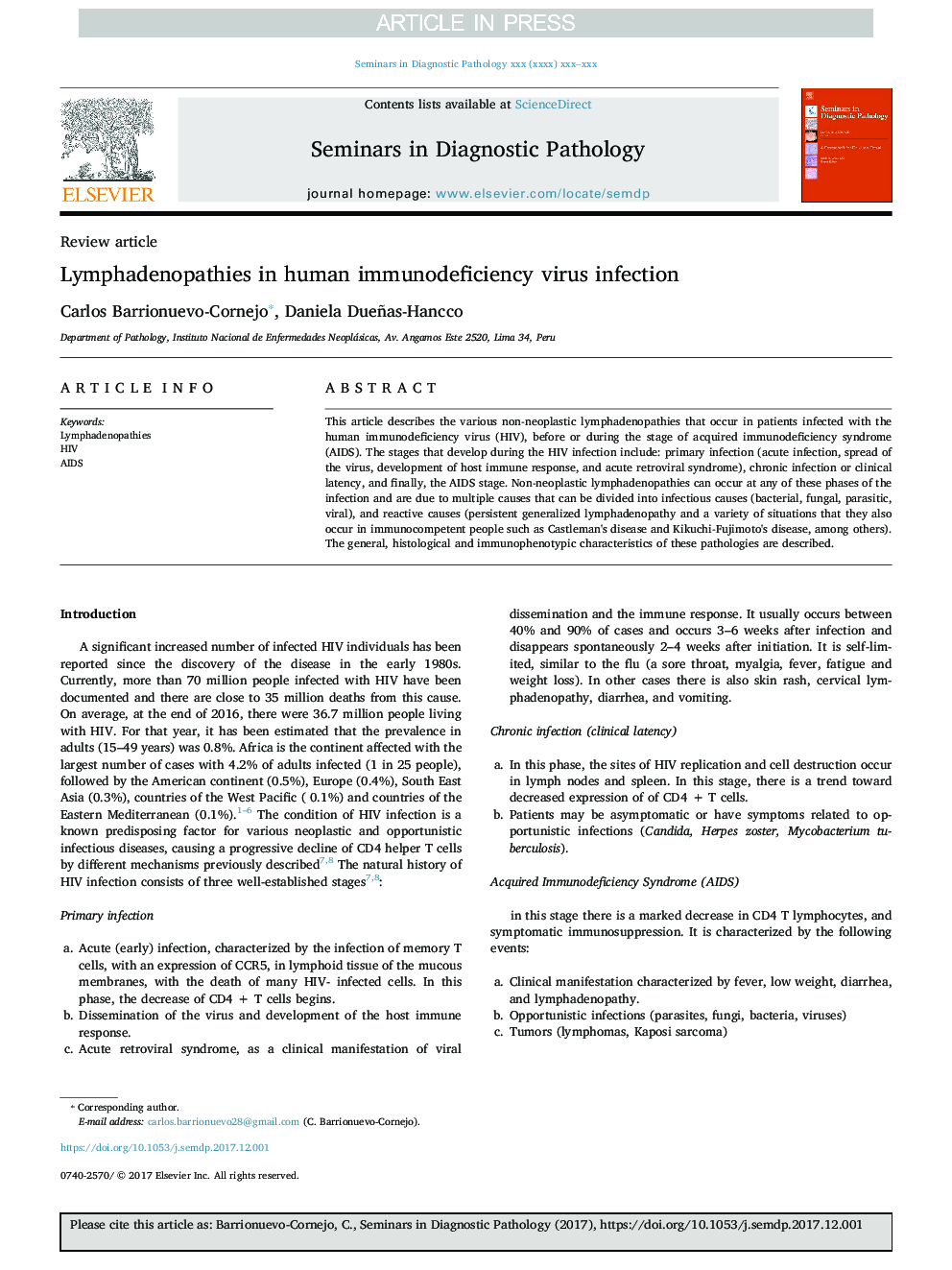| Article ID | Journal | Published Year | Pages | File Type |
|---|---|---|---|---|
| 8808063 | Seminars in Diagnostic Pathology | 2018 | 8 Pages |
Abstract
This article describes the various non-neoplastic lymphadenopathies that occur in patients infected with the human immunodeficiency virus (HIV), before or during the stage of acquired immunodeficiency syndrome (AIDS). The stages that develop during the HIV infection include: primary infection (acute infection, spread of the virus, development of host immune response, and acute retroviral syndrome), chronic infection or clinical latency, and finally, the AIDS stage. Non-neoplastic lymphadenopathies can occur at any of these phases of the infection and are due to multiple causes that can be divided into infectious causes (bacterial, fungal, parasitic, viral), and reactive causes (persistent generalized lymphadenopathy and a variety of situations that they also occur in immunocompetent people such as Castleman's disease and Kikuchi-Fujimoto's disease, among others). The general, histological and immunophenotypic characteristics of these pathologies are described.
Related Topics
Health Sciences
Medicine and Dentistry
Pathology and Medical Technology
Authors
Carlos Barrionuevo-Cornejo, Daniela Dueñas-Hancco,
